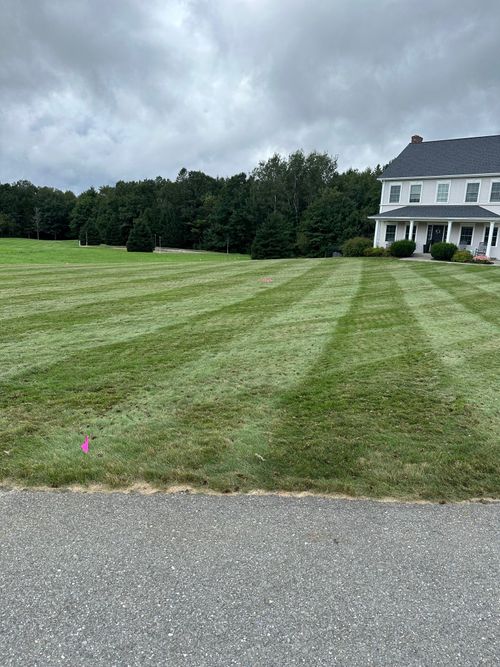When it comes to planting grass, whether creating a new lawn from scratch or overseeding an existing lawn, there are several factors to consider. Some may argue that the most important is timing. With the unpredictable weather we tend to experience here in Northern Maine, dormant seeding can be a great option.
WHAT IS DORMANT SEEDING?
As we discuss dormant seeding, it is defined as planting grass when both soil and air temperatures are consistently 40 degrees F or lower. The goal with this process is to sow the seed with the intention of it NOT germinating during the current growing season, but rather be in place to get a head start on the following spring.
The main reason that dormant seeding is a favorable option is its flexibility with timing. When overseeding or installing an entirely new lawn in the late summer/early fall, sometimes the optimum window is extremely short in our area. It’s not uncommon to go from the blast furnace of summer, to cool fall days, and then to frosty mornings in the span of a few weeks. This doesn’t leave much wiggle room for new grass plants to establish properly before winter. However, when sowing seed during the dormant window we aren’t concerned about the plants becoming established so it can be done as late as you wish provided the ground isn’t frozen solid.
DON’T I NEED TO WATER THE NEW SEED?
Another major positive aspect of dormant seeding is its lack of dependency on supplemental irrigation. During the growing season, new grass seedlings typically need substantial water to be applied in order to grow to maturity. On the other hand, seed that has been planted during dormant timing will have worked its way down in the soil via frost over the winter. It will be protected within the moist soil, and receive plenty of water naturally as the snow melts in early spring. This may also be the only way to feasibly grow grass on large areas where supplemental irrigation is simply not possible. Not only will the seedlings receive early moisture, they’ll get the jump on the multitude of spring/early summer weeds, insects, and diseases that can easily prevent proper establishment.

WHICH GRASS TYPE WORKS BEST FOR DORMANT SEEDING?
When selecting the type of grass to plant for a dormant overseeding or new lawn, species that germinate/grow more slowly tend to perform slightly better…think of turf-type tall fescue and Kentucky bluegrass rather than perennial ryegrass. This is because if any short thaws or warm-ups do occur over the winter, these species will be at lower risk of germinating prematurely and then failing when the cold returns.

LOCAL LAWN CARE SOLUTIONS.
With a long list of positive reasons associated with dormant seeding, it’s a great tool to use to fill in thin areas on your lawn or grow an entirely new lawn while letting Mother Nature do the lion’s share of the work.
Our lawn care professionals in Cyr Plantation & Caribou, ME, have the knowledge and expertise to care for your lawn. If you’re ready to get your turf back in shape, call (207) 544-9420 to learn more about our lawn care services today. For additional blog articles, click here!

